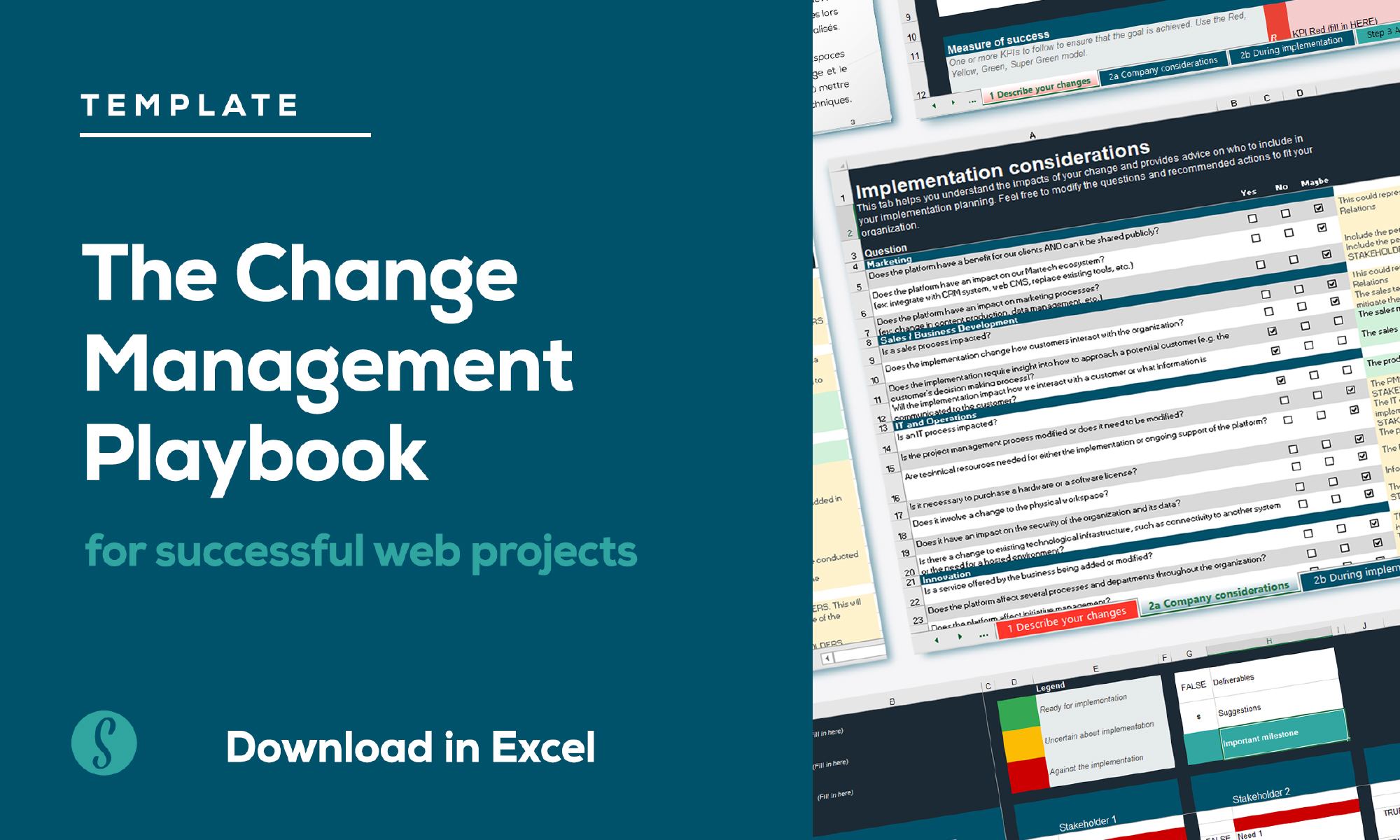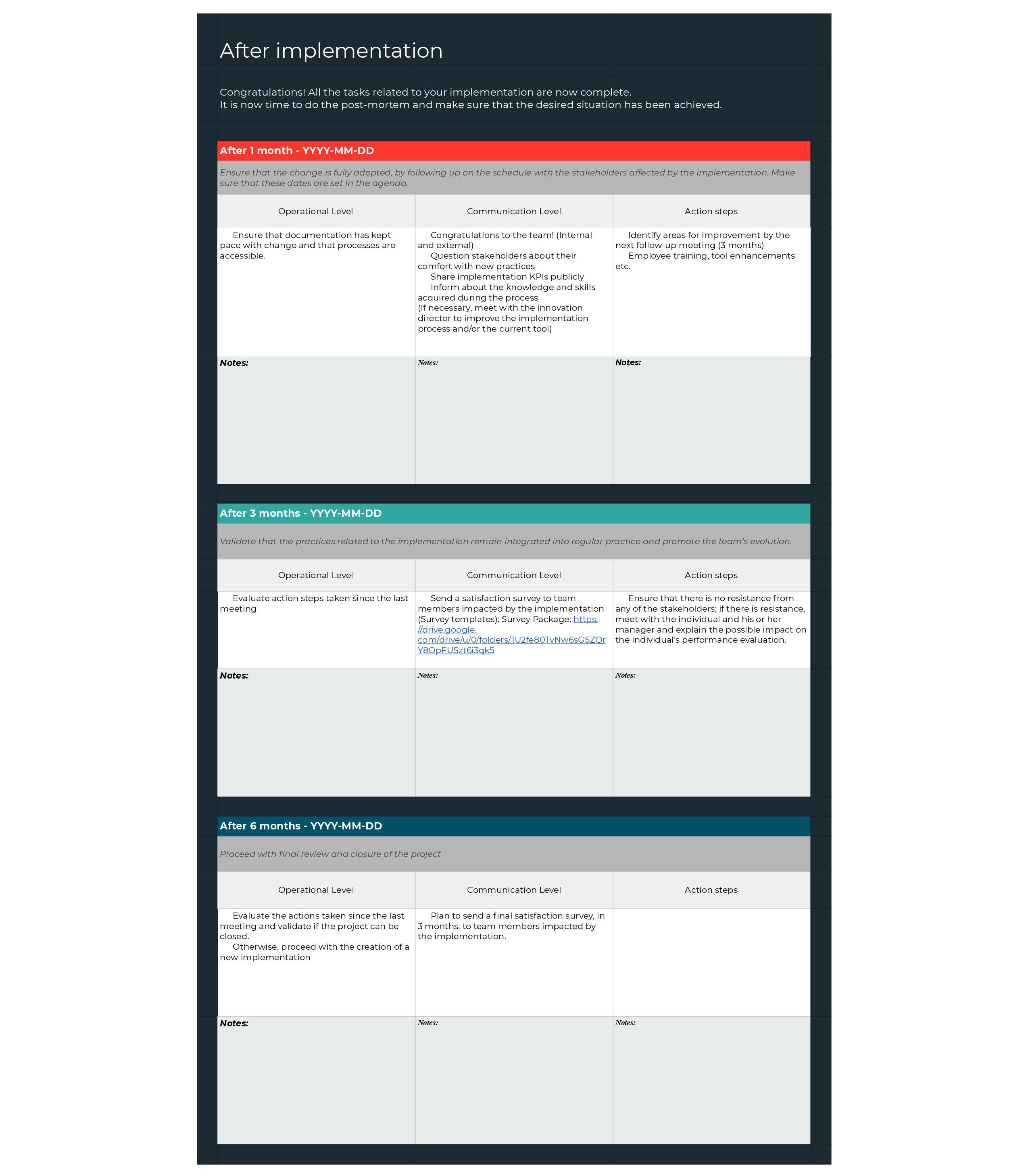If you’ve implemented new platforms in a business environment before, you know how critical effective change management is to getting budget approval, additional resources, and cross-departmental support from implementation to operationalization.
There’s usually a high investment cost to change management, and getting buy-in can be a challenge. Stakeholders from various departments are involved in either the purchase, implementation, or ongoing use of a new platform. Each stakeholder may have different needs and opinions that either support the change or could hinder the success of the project. Other stakeholders, such as those in Security or Finance, are tasked with finding alternatives or risks associated with your project. In some instances, the technical knowledge required to implement a complex platform can act as a roadblock to change.
We have helped our clients successfully navigate these internal challenges (and more) as they invest in the digital ecosystems that support the customer lifecycle. That’s why Symetris has developed the Change Management Playbook, an Excel-based tool that will help you streamline, and even delegate, the process of implementing change effectively.
You can adapt this template to your organization's unique structure and standards. Populating the various sections will help you identify each stakeholder’s position and understand how to meet their needs—and overcome their objections—from planning through to adoption.
What you need to know about change management
Change management helps organize the effort required to move from an unwanted situation to a desired one.
During three distinct phases—pre-implementation, during the implementation (transition), and post-implementation (monitoring and KPIs)—people affected by change will move from one state to another, sometimes supportive, sometimes concerned. Our tool focuses on these three phases.
Step 1: Describe your changes
Before any implementation, in Phase 1, remember that there are a number of questions about the current situation, as well as dissatisfactions, and frustrations. This is the best time to document the irritations of the current situation. The aim is to obtain a shared understanding of the problem.
This phase generates a lot of questions, suggestions, and sometimes scepticism. Because of that, it’s essential that you have a clear vision for the implementation, understand your desired outcome, and know why you need the change. This will help engage the whole team and make sure you stay focused and aligned during planning.
You also need to identify your measures of success, which you will return to after the implementation to gauge what worked and what didn’t.
The last thing is to evaluate your organization's position on the change you want to propose. There are three positions:
- Favourable: the change is defined collaboratively, and there is high motivation and buy-in
- Undecided: the change is defined collaboratively but not on all the points, and the mobilization on the project is lower
- Unfavourable: the change is mandatory, without any input from stakeholders, and the engagement and productivity are low
Depending on your organization's position, you will use one of the three strategies: Consultative Management (Favourable), Negotiation Management (Undecided), Obligation Management (Unfavourable).
Document these in Tab 1 ‘Describe your changes’ in the corresponding boxes.
Step 2: Identify stakeholders
Your CISO might be someone you meet once or twice a year, for instance, but if she considers the platform and proposed use cases as high-risk, it could delay implementation until you can address her concerns. As a result, the timing might not work in your favour to get budget approval.
A comprehensive implementation plan identifies the departments your changes will affect and how to make sure they are involved. The ‘Company considerations’ tab helps you understand which, if any, departments you need to include as you proceed, as well as the level of engagement they are expected to have.
Note that the questions and department names in Column A are examples that you can modify according to your organization's processes and structure. Simply overwrite the text in each cell. Column E contains the actions to take if the answer to the question is "YES" or the actions to consider if the answer is "MAYBE". You can adapt these instructions based on your understanding of the organization as well. Better yet, consult with a representative from each department to understand when they need to be looped in and to what degree.
For clarity, we recommend identifying which role should be included as a stakeholder. Typically that is when their support of your project is critical to its success.
Step 3: Engage stakeholders throughout the process
Use the ‘During implementation’ tab to identify and track the requirements of each stakeholder that will allow them to reach the "green" level to complete the implementation (green = go!). You may need a regular cadence of meetings where you follow-up with individuals to update them on progress and take their temperature with how on-board they are with the project.
Note the date and document their last round of feedback in the tool. The objective here is to consider all needs while ensuring that the goalposts don’t get moved.
Step 4: Post-implementation
Congratulations! All the tasks related to your implementation are now complete. Now it’s time to do the post-mortem and confirm that the desired outcome has been achieved.
You’ll find guidelines in the ‘After implementation’ tab on operational steps and communications for one month, three months, and six months following implementation. You can use them to ensure that:
- The change is fully adopted by following up on the schedule with the stakeholders affected by the implementation
- New practices and processes related to the implementation are integrated with day-to-day operations and prioritize team adoption
- Conduct a final review of the implementation to close out the project
We hope this walkthrough of the Change Management Playbook shows you how the tool can help you systematically navigate the change management and approvals process for your new platform.
Download your copy of the Change Management Playbook to ensure the success of your next implementation.






![It's time to switch agency [e-book]](/sites/default/files/2023-04/Time%20to%20Switch%20Agency%20%5Be-book%5D.jpg)